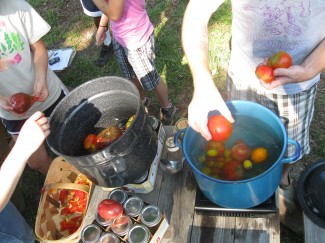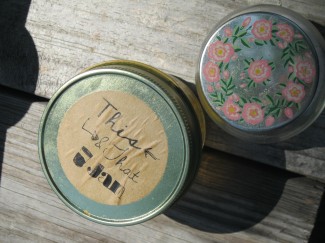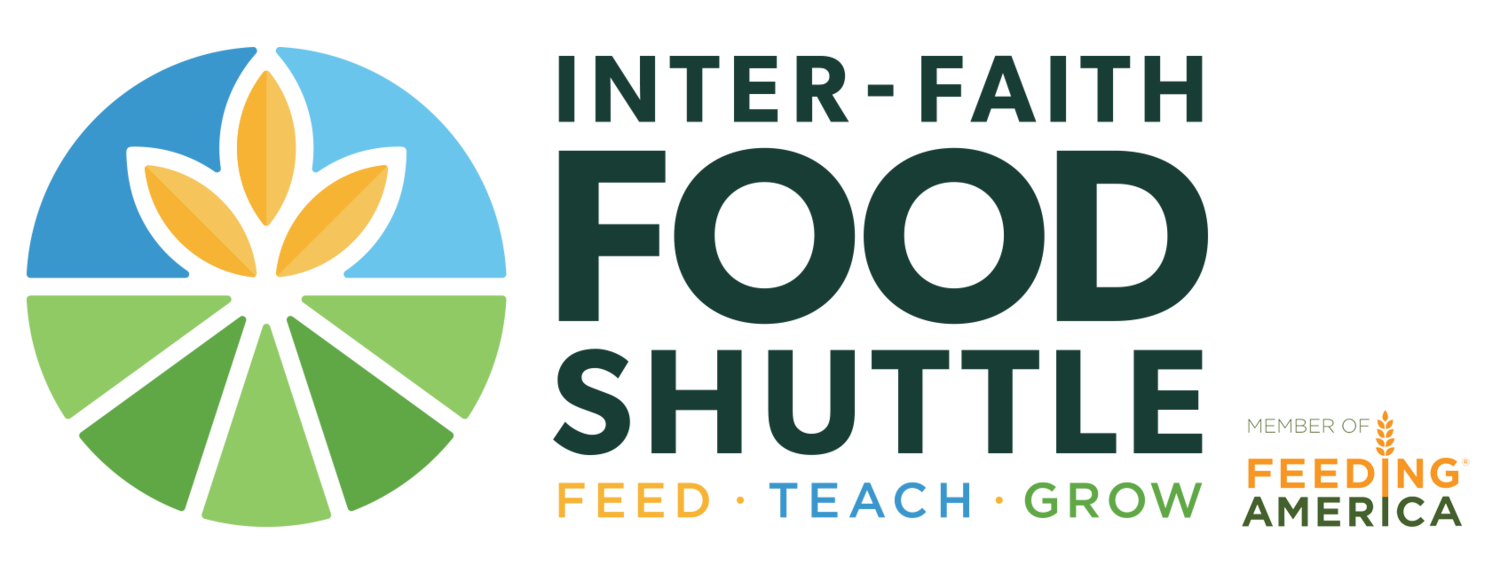Last Tuesday on the IFFS Wake County Teaching Farm, the Young Farmer Training Program (YFTP) Apprentices were stirring up some great things – stirring a pot of Sweet Tomato Basil Jam, to be specific! Benjamin Filippo, of This and That Jam, came out to teach the teens how to can using tomatoes and basil they grew just steps away on the farm. YFTP Apprentices learn not only how to grow food, but also the importance of preserving the harvest for future use or for sale as value-added products. Canning is a great way for farmers to increase profitability by extending sales longer and making the most use of their crops. Having this knowledge and making a profit is a way to address both access and income barriers to food security. The YFTP apprentices sell produce from the IFFS Teaching Farm at the Midtown Raleigh Farmers Market each Saturday morning from 8am-noon.
 For many of the teens (and for me), the concept of savory jams was somewhat unfamiliar. But by the end of the workshop, they couldn’t wait to try making some tasty sweet and savory combinations of their own. Canning preserves food at its peak – full of flavor and nutrients. You can still eat tasty tomatoes full of the same in-season flavor in the middle of January -- in sauces, salsas, and jams. The apprentices used several varieties of Heirloom tomatoes, all grown on the IFFS Wake County Teaching Farm, to give their jam a rich and vibrant flavor.
For many of the teens (and for me), the concept of savory jams was somewhat unfamiliar. But by the end of the workshop, they couldn’t wait to try making some tasty sweet and savory combinations of their own. Canning preserves food at its peak – full of flavor and nutrients. You can still eat tasty tomatoes full of the same in-season flavor in the middle of January -- in sauces, salsas, and jams. The apprentices used several varieties of Heirloom tomatoes, all grown on the IFFS Wake County Teaching Farm, to give their jam a rich and vibrant flavor.
Ben (a former IFFS VISTA!) and This and That Jam buy from local farmers almost exclusively. They buy produce that looks a little less than picture perfect, food that many people won’t buy but is still just as good as the more shapely item next to it. Like we do through our field gleaning program, Ben will ask farmers if he can glean their leftover produce, taking produce they can’t sell off their hands, reducing waste, and getting a ton of fruit, which he then makes into some pretty excellent jam. And what do you eat a savory jam like Sweet Tomato Basil with? How about with eggs, on a burger, with any sort of meat, on crackers, on toast with cream cheese, or with anything else that sounds good!

Canning first started with Napoleon and his troops in France, but came to the US through George Mason (ever heard of Mason jars?). Long a part of America’s history, canning fell out of favor in the 1950s with the mass introduction of packaged foods and preservatives. With This and That Jam, Ben is bringing canning back as a practical component of a truly sustainable food system.
Canning and making your own preserves also allows you to better control what you’re putting into your body, meaning without corn syrup and without preservatives. You can even make your own pectin if you want jam that sets more quickly. The apprentices’ jam ingredients included: fresh tomatoes, sugar, apple cider vinegar, minced basil, and salt.

When fruits and vegetables are in peak season and produce a bounty, many people don’t know what to do with all the extra. Canning is a great way for people subscribing to Community Supported Agriculture (CSA) boxes to preserve this bounty to use as an ingredient in something else – like salsa, jam, or a pickled product.
As a bonus, canning not only a builds a sustainable, secure local food system, but builds community! Canning lots of produce is best done with a crowd of people, gathered around, sharing stories and good times as they chop, boil, stir, and can. Along with the fresh fruit, the canning process preserves memories of togetherness. Then, when you open that can in the middle of winter, you can remember how you grew it or where it came from, how it was made, and the community who helped you produce that delicious, nourishing jam.



See more photos from the workshop on our Flickr stream.
